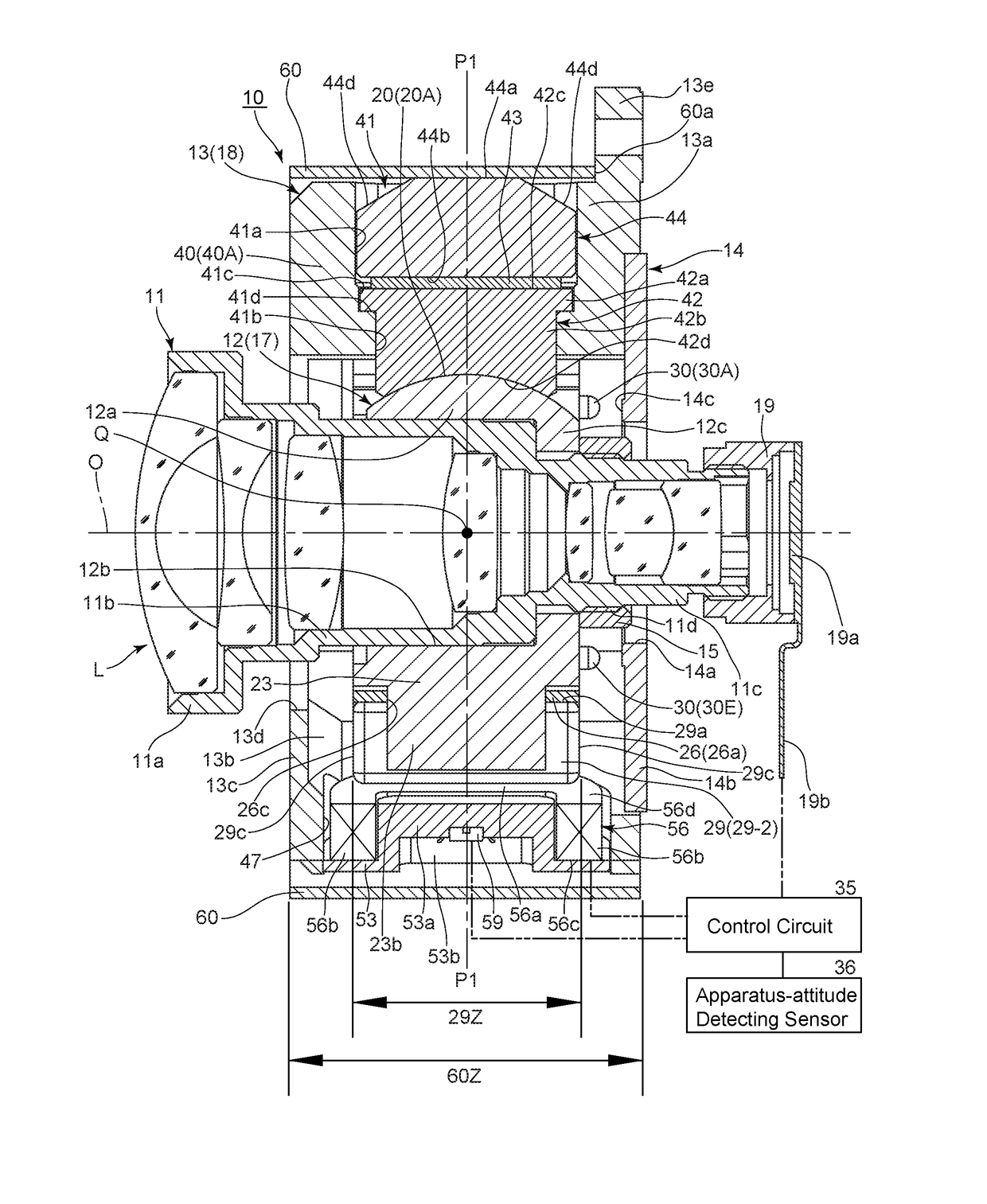Imaging apparatus
a technology of imaging apparatus and lens unit, which is applied in the direction of color television details, television system details, television systems, etc., can solve the problems of adverse effect on the support accuracy of the lens unit, difficult to control the positional accuracy of the components, and difficult to achieve a high-response anti-shake driving operation, etc., to achieve superior anti-shake performance and operation smoothness, high degree of flexibility in operation, durability, productivity and maintainability
- Summary
- Abstract
- Description
- Claims
- Application Information
AI Technical Summary
Benefits of technology
Problems solved by technology
Method used
Image
Examples
first embodiment
[0064]An embodiment (first embodiment) of an imaging apparatus 10 according to the present invention will be discussed below with reference to the attached drawings. The imaging apparatus 10 is provided with an imaging optical system L and an image sensor unit 19 as components of an imaging device for obtaining object images. A one-dot chain line O shown in the drawings designates the optical axis of an imaging optical system L provided in the imaging apparatus 10. In the following descriptions, the optical axis direction refers to a direction along, or parallel to, the optical axis O (a direction in which the optical axis O and an extension line thereof extend, or a direction in which a straight line parallel to the optical axis O extends), “front” refers to the object side, and “rear” refers to the image side with respect to the optical axis direction. In addition, a radial direction refers to a radial direction from the optical axis O (the direction in which a straight line norma...
second embodiment
[0152]The support member (supporter) 70 shown in FIG. 36, provided as an element of the imaging apparatus, is provided at the radially inner end (the lower end with respect to FIG. 36) with a support surface (supporter) 71. The support surface 71 is formed from a first flat surface portion 71a and a second flat surface portion 71b. The first flat surface portion 71a is a flat surface which is inclined radially outwards in the direction from front to rear in the optical axis direction (from left to right with respect to FIG. 36), while the second flat surface portion 71b is a flat surface which is inclined radially outwards in the direction from rear to front in the optical axis direction (from right to left with respect to FIG. 36). The radially outermost ends of the first flat surface portion 71a and the second surface portion 71b meet at the imaginary plane P1. The first flat surface portion 71a and the second flat surface portion 71b are substantially symmetrical in shape with re...
third embodiment
[0154]The support member (supporter) 72 shown in FIG. 37, provided as an element of the imaging apparatus, is provided at the radially inner end (the lower end with respect to FIG. 37) with a support surface (supporter) 73. The support surface 73 is formed from a first flat surface portion 73a, a second flat surface portion 73b and a third flat portion 73c. The first flat surface portion 73a is a flat surface which is inclined radially outwards in the direction from front to rear in the optical axis direction (from left to right with respect to FIG. 37), while the second flat surface portion 73b is a flat surface which is inclined radially outwards in the direction from rear to front in the optical axis direction (from right to left with respect to FIG. 37). The third flat portion 73c is a flat surface which is substantially parallel to the optical axis O and substantially orthogonal to the imaginary plane P1. The center of the third flat portion 73c in the optical axis direction li...
PUM
 Login to View More
Login to View More Abstract
Description
Claims
Application Information
 Login to View More
Login to View More - R&D
- Intellectual Property
- Life Sciences
- Materials
- Tech Scout
- Unparalleled Data Quality
- Higher Quality Content
- 60% Fewer Hallucinations
Browse by: Latest US Patents, China's latest patents, Technical Efficacy Thesaurus, Application Domain, Technology Topic, Popular Technical Reports.
© 2025 PatSnap. All rights reserved.Legal|Privacy policy|Modern Slavery Act Transparency Statement|Sitemap|About US| Contact US: help@patsnap.com



